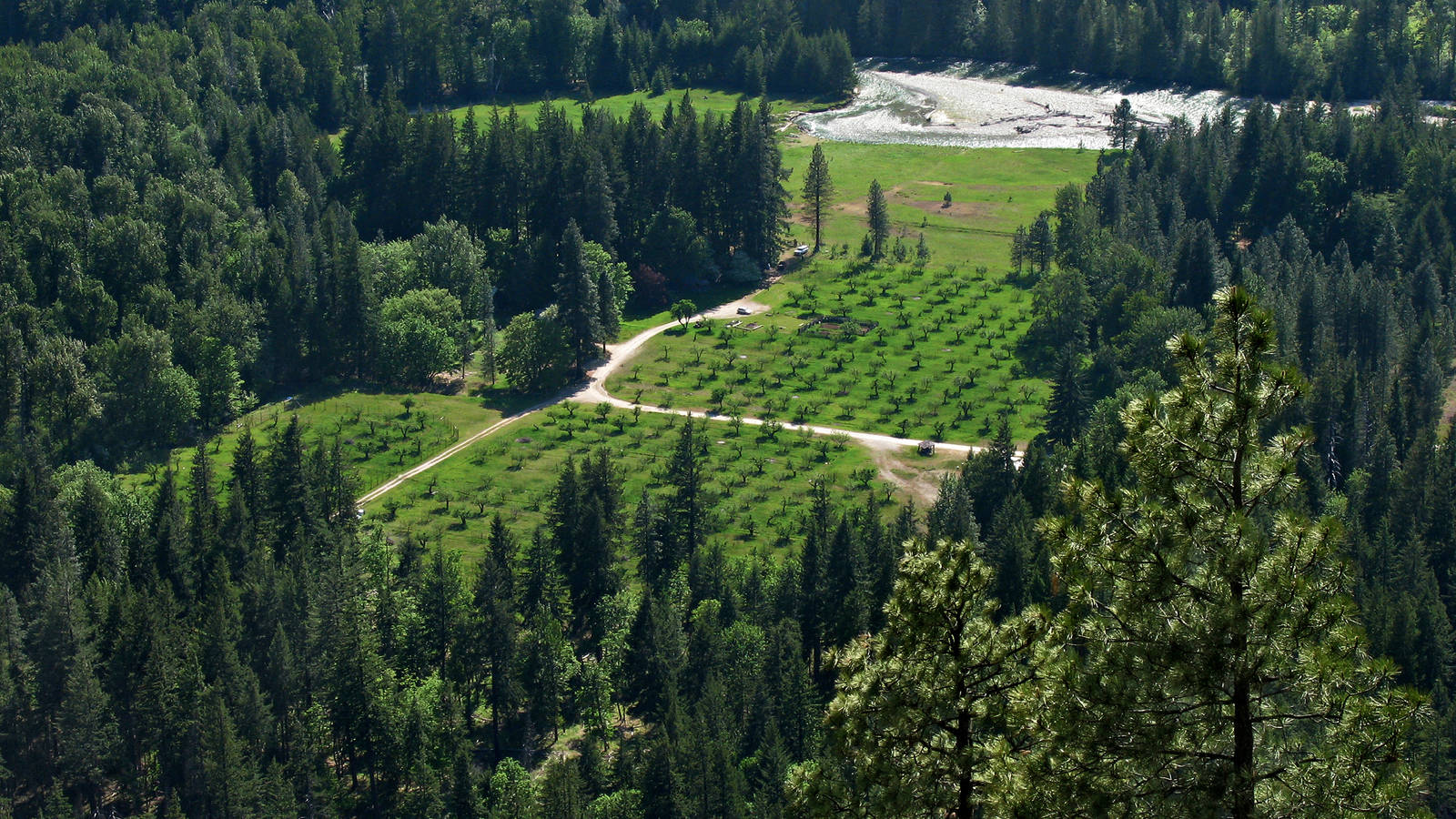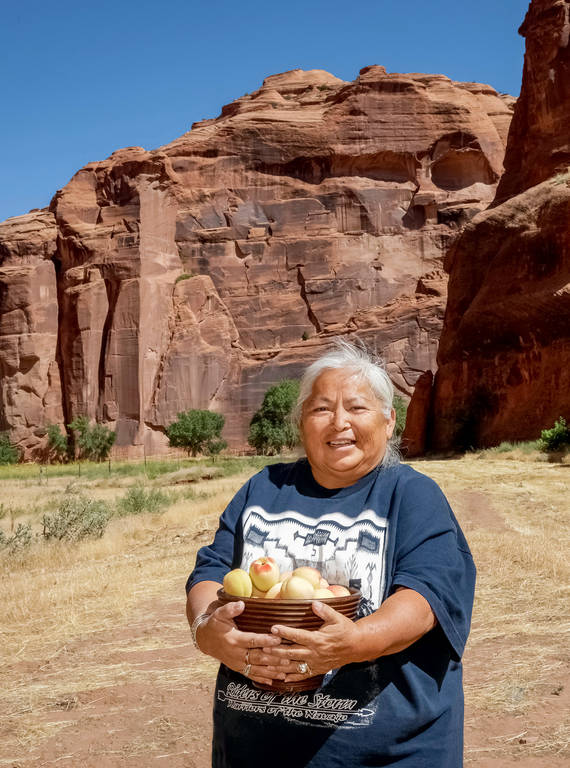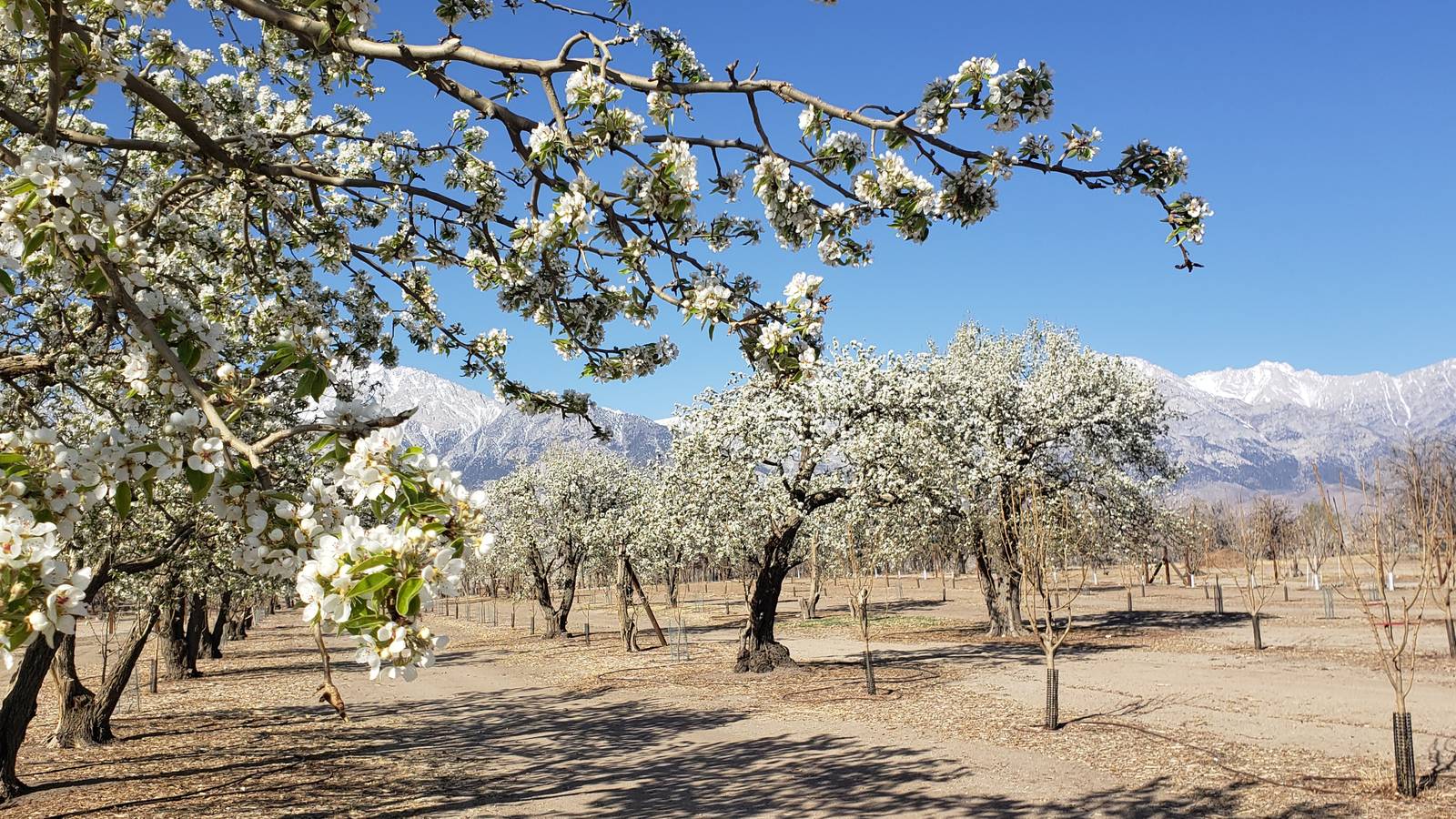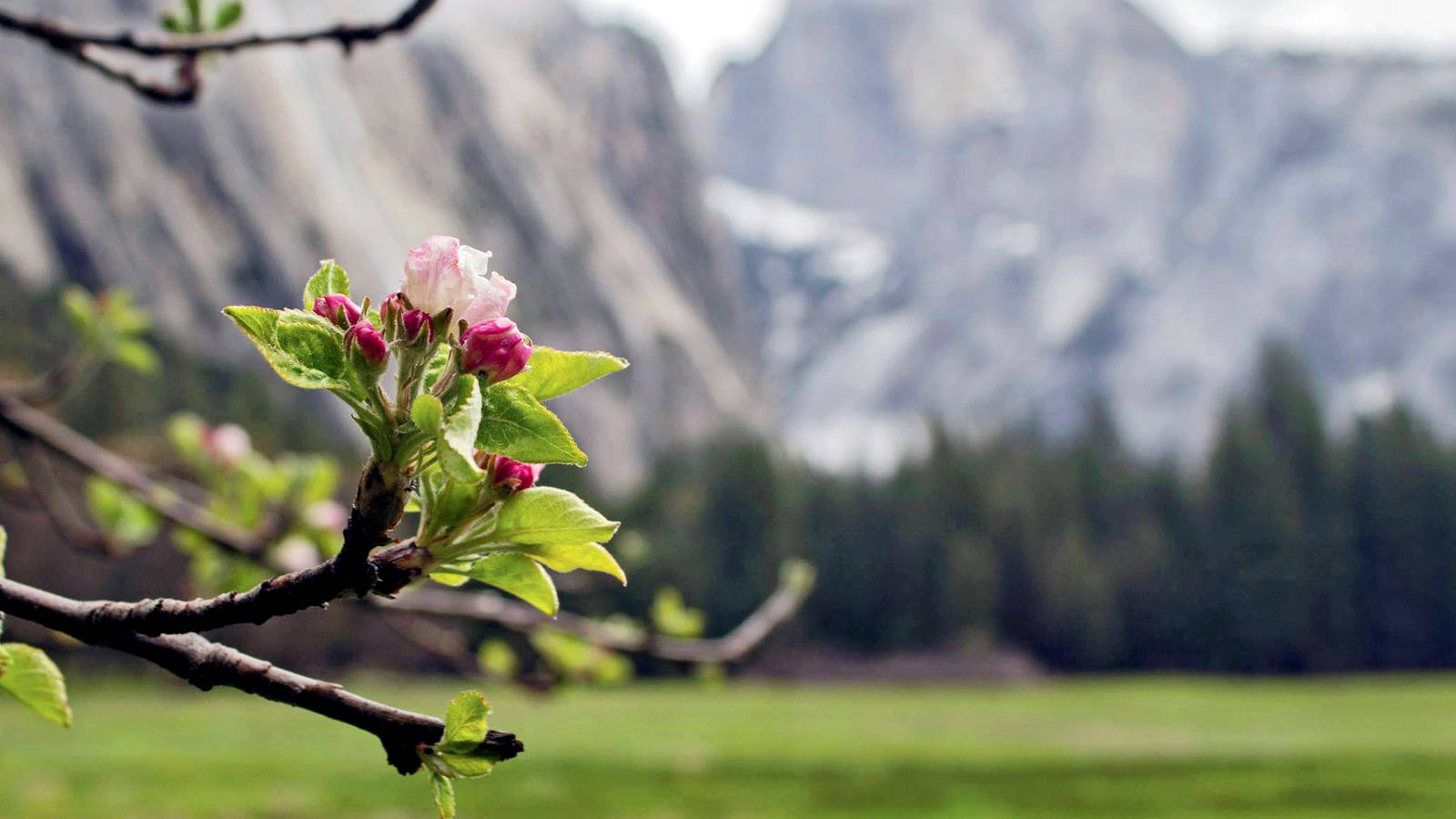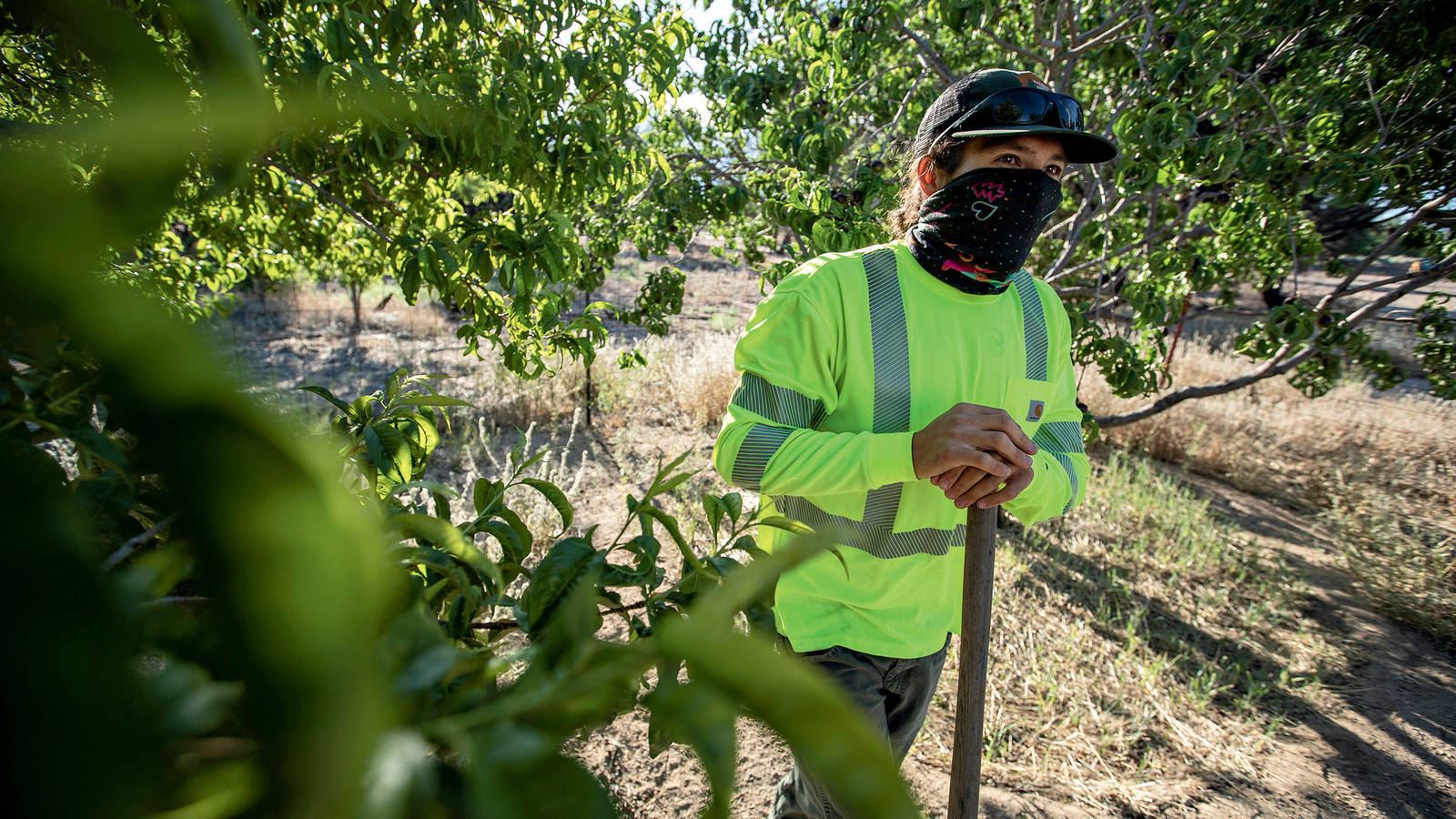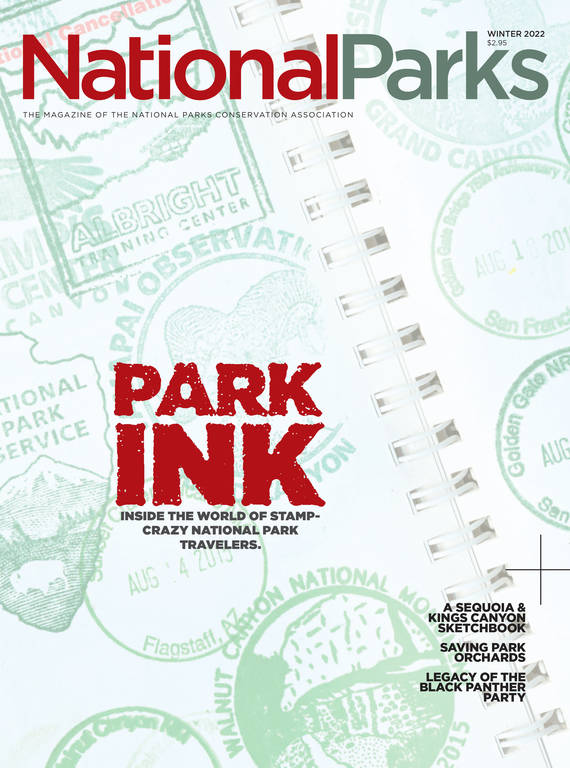Winter 2022
A Fruitful Mission
As the park system’s fruit trees reach the end of their lifespans, staff are scrambling to save them.
Matt Mohrman plans to keep a watchful eye on the young apple trees of Sleeping Bear Dunes National Lakeshore come spring. Should any of them blossom for the first time, he will move among them, pinching off each delicate, snowy whorl. His actions may be troubling to watch, but they will be necessary to achieve his goal. He wants these trees — trees he’s cared for since they were spindly grafts just a few inches tall — to focus all their energy on growth rather than apple production. Perhaps in another year or two they will be strong enough to bear fruit, carrying on the legacy of their forebears in this windswept corner of Michigan.
For almost a decade, Mohrman has served as the park’s volunteer coordinator. Over time, his role has grown to include working with a historical architect to preserve the character of the landscape by — in part — ensuring the survival of the fruit trees planted by the area’s settlers. Mostly, the work involves providing intensive care for century-old trees. More recently, however, Mohrman has helped prepare for the future by establishing new trees, such as those he may soon strip of their flowers, to replace the ones that were lost.
“Thirty years is a good lifespan for a tree in a commercial orchard,” Mohrman said. “That’s not what we’re going for. We want these trees to just become super healthy apple trees that will last another 100 or 150 years, hopefully.”
A 1990s inventory identified more than 120 national park sites with historic fruit trees. This map hints at the diversity of those parks. ©KAVEL RAFFERTY (map and fruit illustrations)
His challenge is not unique. Over the years, scores of park staff — those charged with conserving their resources in perpetuity — have faced the monumental job of managing the thousands of fruit trees they inherited. At one time found in more than 120 national park sites, these drupes and pomes owe their existence to presidents and homesteaders and entrepreneurs. Today, visitors can stroll beneath boughs of pear trees at Theodore Roosevelt’s “summer White House” in New York, imagine early 20th-century farmers plucking bushels of apples at the Hensley Settlement at Cumberland Gap National Historical Park in Kentucky, or see how the Diné (Navajo) are reclaiming a piece of their heritage by sowing ancestral peaches in Canyon de Chelly National Monument in Arizona.
Historic Fruit Trees of the Park System
Thirty years ago, nearly one-third of the national park sites had historic fruit trees of some kind. It is unknown how many of them remain.
See more ›If a park’s fruit trees lack historic integrity because they are less than 50 years old or come from a time after the park’s period of significance, they might be removed or simply abandoned to their fate. For those deemed worth saving, the stakes are high. These fruit trees anchor critical landscapes, such as the battleground at Gettysburg National Military Park in Pennsylvania, and preserve varieties — including the Capitol Reef Red apple in Utah — that would cease to exist without successful propagation. They also shed light on certain agrarian practices that, with the evolution of commercial growing methods, could one day disappear.
Revitalizing aging trees takes an abundance of time and money, plus the commitment of skilled caretakers — a challenge for an agency that employs very few horticulturists. Parks can’t always count on that rare trifecta, and many have seen their trees wither or die. For example, only a small fraction of the 30,000 fruit trees that once swathed the hillsides of an estate in what is now Blue Ridge Parkway survive today.
Thankfully, the news isn’t all bleak. Below are the profiles of a few of the parks whose historic fruit trees are receiving some much-needed TLC from a small cadre of people toiling to restore these living artifacts to their former glory.
Buckner Orchard in the North Cascades is an irresistible temptation for area wildlife and a challenge for its caretaker. Laurie Thompson relies on a complicated system of fences and gates to keep out elk and bear while allowing summer access to deer.
NPSAncestral peach seeds, which are still sown in Canyon de Chelly National Monument, produce trees that are more drought resistant and live longer, according to Reagan Wytsalucy, a member of the Navajo Nation and an assistant professor with Utah State University Extension. The area’s peach orchards were largely destroyed by the U.S. Army in the mid-1800s, but people such as Wytsalucy and Sylvia Watchman (pictured) are working to propagate these traditional strains.
©JULIEN MCROBERTSManzanar National Historic Site’s pear orchards include a mix of historic trees and young trees, spaced in a historically appropriate grid.
NPSApple blossoms in Yosemite National Park serve as a reminder of the valley’s long history of human presence, from the Southern and Central Miwok people who trace their creation story to this area to the 19th-century settlers who planted orchards here.
NPS/CINDY JACOBY“An orchard is constant work, especially with these historic trees,” said arborist Dave Goto, pictured here as he prepares to water Manzanar National Historic Site’s aging pear trees.
©BRIAN VAN DER BRUG/LOS ANGELES TIMES

People Power
The apple trees of Sleeping Bear Dunes are a physical reminder of the park’s peopled past. In the mid-19th century, European settlers ventured to the pinkie finger of Michigan’s Lower Peninsula, where some proceeded to log the valuable hardwoods before turning to agriculture. They transformed the community of Port Oneida into a checkerboard of farms, planting cash crops, as well as family orchards to meet their baking, canning and cider needs.
“We call them spitters,” Mohrman said of the majority of the park’s apples. “They’re for baking, not for eating.”
Over the years, Mohrman has come to know many of his wards, so their decline hits close to home. “So many of them are absolutely on their last legs,” he said.
Since 2014, the park and its partners have been building a nursery of trees to replace those lost. When the young trees — genetic clones of their forebears by virtue of grafting — are big enough to transplant, work parties lug them to places that, according to 1930s aerial imagery, were once home to orchards.
This May, volunteers moved about a dozen saplings to the park’s two islands. Among those helping was Tom Adams, a natural resource specialist with Leelanau Conservation District and longtime park volunteer. Adams, whom Mohrman calls one of the brains behind the outfit, grew up on a fruit farm and brings a wealth of grafting expertise to the endeavor.
Of course, the work doesn’t end upon planting. “It takes a pretty good effort to keep these trees growing out there,” Mohrman said. “They need water, pruning, weeding, mowing and all of that business.” And because the settlers didn’t use chemicals to control pests, the park doesn’t either. Mohrman or others must spray soapy water onto leaves to kill bugs or dribble vinegar into the mulch to ward off voles.
While the long-term goal is to develop orchards in the 3,400-acre historic district of Port Oneida, a more immediate concern is the propagation of the park’s bespoke varieties, relics from the so-called Golden Age of Pomology, when the U.S. boasted thousands of types of apples. To date, Mohrman, Adams and others have grafted more than 50 different varieties, but not all have survived.
One apple at particular risk is the Shiawassee Beauty, which was developed in 1870 and named for a county in Michigan. There are only a handful of the trees left throughout the state and just two in the park. “To be able to graft it and keep it growing in the park is super important,” said Mohrman.
So far, the park has had little success perpetuating this variety, but that could soon change. In 2019, Adams grafted five new trees from scion wood (pencil-thin twigs representing the previous year’s growth) he collected from one of the park’s resident Shiawassee Beauties. The two surviving whips, at 6 inches tall, are still a long way from being planted, but Adams is hopeful they’ll make it. “The odds are good,” he said. “We’re taking pretty good care of them.”

A Community’s Legacy
The outline of the 200-acre Fruita Rural Historic District within Capitol Reef National Park resembles an aging fruit tree, its trunk canted slightly to the east with two gently curved branches stretching west along Sulphur Creek and east along Fremont River. Because of its location at this confluence, Fruita was originally known as Junction. But that was before a small group of Latter-day Saints, who settled in the valley in the late 1800s, tucked perhaps a dozen orchards between the sheer cliffsides and the life-giving streams.
Here, in south-central Utah some 200 miles south of Salt Lake City, the homesteaders grew all manner of sweet-smelling, sun-ripened fruit, from cherry and apricot to peach and plum. The community’s green thumb led to the town’s name change in 1902.
Though Capitol Reef was designated a national monument in 1937 (and became a national park in 1971), much of Fruita remained in private hands until the early 1960s, when a paved road reached the community and the park acquired most of the remaining land. The orchards were cared for at least in part by a string of private individuals until the early 1970s, when the park hired staff to tend to the trees, including longtime orchard manager Kent Jackson.
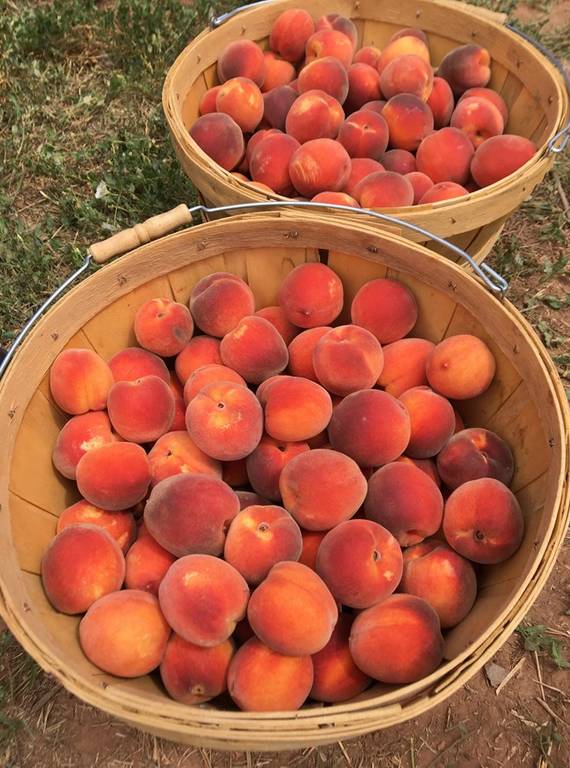
Peaches are just one of the many fruits grown in the extensive orchards of Capitol Reef National Park.
NPS/JAMIE MANSFIELD“Utah, obviously, has a long history of fruit production, and maintaining that legacy is really important for the park,” said park horticulturist Fritz Maslan. He’s energized by Capitol Reef’s role as a genetic bank for heirloom fruit varieties and views the popular and long-running U-pick operation, which allows visitors to harvest the bounty from June to October, as an indispensable aspect of the park experience. “Having people be able to come here to the park and pick fruit right off the tree and eat it right away,” he said, “I think it’s something that is often missing in our more fast-paced, modern lifestyle.”
Over the last decade, the park has lost more than 130 trees a year, on average, due to various factors, and many of the remaining 2,000 trees “are nearing the end of their lifespan,” Maslan said. As the staff work to stabilize the remaining trees, slowing the losses, they also are looking to the future.
The park’s ambitious plan to restore its orchards includes a spring 2022 replanting of 260 peach whips in the now-fallow Guy Smith orchard. The process has involved extensive community outreach (especially important given the number of Fruita descendants who reside nearby) and entailed an exhaustive site selection and soil preparation process this fall.
Continuous growing, lack of fertilization from the livestock that used to graze the area, and drought conditions, which preclude sediment and nutrients from being deposited by routine floods, have all sapped the park’s soils, Maslan said. Park staff had to till and grade the ground, mix in manure, dig an irrigation ditch, and plant a cover crop of orchard grass to prevent erosion and improve the health of the soil. Though the challenge is huge and the project lengthy, Maslan is enthusiastic about the work.
“This is part of a larger effort by the park to focus on the orchards as a defining characteristic of the park landscape and really bring them back into their full glory,” he said.

A Landscape Edit
Few people who visit John Muir National Historic Site have heard of John Strentzel, the physician and Polish immigrant who purchased his first 20 acres of land northeast of Oakland, California, in 1853. His legacy as landowner and gentleman farmer has been largely overshadowed by that of his son-in-law, the Scottish American naturalist John Muir.
“I always feel like Strentzel doesn’t get enough credit,” said Keith Park, the horticulturist and arborist for several San Francisco Bay Area parks, including John Muir National Historic Site.
A man of science, Strentzel enjoyed experimenting. “He kind of dabbled,” said Park. “He planted a little bit of everything.” Not only did he grow a wild assortment of fruits, he also tinkered with a dizzying number of varieties, showing up at the county fair in 1861 with no fewer than 36 kinds of apples, 35 of pear, five of plum and four of quince.
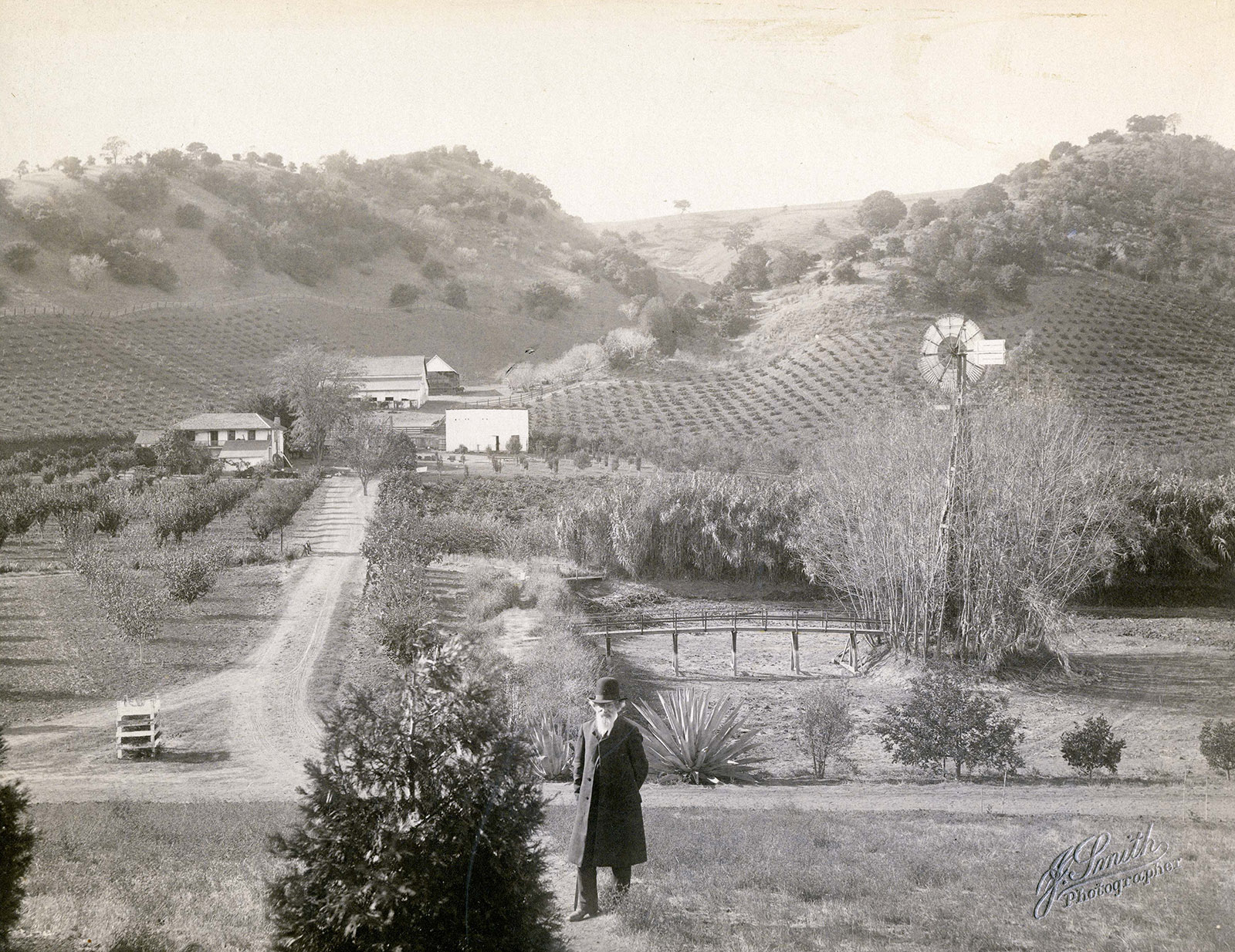
John Strentzel stands before a portion of his California estate in 1885. COURTESY OF NPS, JOHN MUIR NATIONAL HISTORIC SITE, JOMU 4185
In 1881, Muir took over operations from Strentzel, and by 1885, Strentzel’s originally modest holding had spread across 2,300 acres. Muir pivoted away from rampant fruit experimentation and focused instead on the commercially marketable fruits, namely grapes and Bartlett pears, before passing management of the ranch to his sister and her husband a decade later.
When Park arrived in 2009 to assume the maintenance of the park trees, he found a “museum of different fruit trees,” most of which had been planted after the designation of the site in 1964. He figures the staff responsible for introducing these novel elements were paying homage to Strentzel’s free-sowing style. One of Park’s first priorities was stripping out the non-historic bits. “I called it editing the landscape,” he said.
Basing his work on the park’s cultural landscape plan, which evaluated what would have been at the park before Muir died in 1914, Park spent the first couple of years cutting down trees, including a few much-loved redwoods. His methods raised quite a few hackles in town and at home: “My own wife got upset,” he said.
He also spent a great deal of time tweaking the appearance of the existing fruit trees. “I inherited these trees of a certain time period that would have had a certain shape, a shape they wouldn’t have naturally,” he said. Only after ruthlessly lopping off branches could he start fresh and, with vigilant pruning, achieve a historically accurate look.
“There’s all these little nuances to orchards specifically, and landscapes in general, that dictate what we do and how we do it and why we do it,” Park said. “I’m well aware that the average visitor sees a bunch of trees in a row and goes, ‘Oh, orchard,’ regardless of the shape they take.”
Even if people aren’t conscious of the work involved, however, Park believes landscapes are akin to a play’s set design: Both have the power to root you in an experience. If he’s done his job right, he said, strolling across the park’s grounds “should give you a sense that you’ve stepped back in time.”

Farming on the Frontier
Viewed from above, the 100-year-old trees in Buckner Orchard stipple the valley floor like nubby Braille. It’s an incongruous sight in this secluded pocket of the North Cascades in Washington where evergreens dominate, mountains tower and the winding Stehekin River carves its way to the 50-mile squiggle of Lake Chelan.
These gnarled trees testify to the boundless grit of the Buckner family who purchased nearly 150 acres from the area’s original homesteader, William Buzzard, in 1910. Though May and William Van Buckner wintered in California, their son Harry began living year-round at their “Rainbow Ranch” in 1915. Together, the family raised livestock, tended large gardens, churned ice cream and planted apples — roughly 50 acres of them. They grew Rome Beauties, Winesaps, Jonathans and Common Delicious (a now-rare forerunner to the widespread Red Delicious).
Today, the Park Service manages 105 acres of the former homestead — including a 10-acre orchard — as part of the North Cascades National Park Service Complex. Inaccessible by car, the homestead and nearby community of Stehekin remain profoundly isolated. Still, some 200 people arrive here every fall to take park in the much-loved harvest festival.
Walking among the remaining 300-odd trees — half of which date to around 1920 — visitors may notice incisor marks crisscrossing ivory trunks where winter-lean elk have gnawed. Some trees creak with age or broken limbs, the latter a result of clambering bears and heavy snow. The trees’ survival is largely due to the efforts of one woman.
Laurie Thompson acts as a sort of Dr. Frankenstein to the ailing trees. She grafts pieces from healthy trees onto the injured ones. Some trees benefit from a single graft; others receive a crosshatch, woven like a basket. Here and there, a severely compromised trunk has been supported by the horticultural version of flying buttresses. Called inarch grafts, these woody braces arc from the ground to the tree trunk, providing support, even nutrients, as the grafts mature.
For 25 years, Thompson, who was originally hired to be on the trail crew, has rolled up her sleeves and dug in. “People call me the orchard manager,” she said. “There’s not much managing besides doing it.” With funding and volunteer labor supplemented by the Buckner Homestead Heritage Foundation (whose president is the Buckners’ great-grandson), she grafts and prunes, contends with the occasional 100-year flood, including one that wiped out the oldest trees in 2003, fights black rot, battles an insidious soil disease that makes it nearly impossible to successfully replant trees, and re-digs and maintains the original, gravity-fed irrigation ditches.
Thompson also participates in a carefully choreographed dance with the park’s wildlife, armoring trees with mesh to keep the voles at bay and installing and removing a series of fences to keep out some animals, namely bear and elk, while allowing access to others. “I don’t know what I would do if a new critter came along that wants to get in, too,” she said.

Against All Odds
Originally part of a fruit colony 28,000 trees strong, Manzanar National Historic Site’s remaining 140-some warped and scarred pear trees are viewed by the park’s arborist, Dave Goto, as “witness trees.”
“They have actually seen a lot over their lifetime,” he said. “If they could tell a story, their stories would be pretty much priceless.”
The trees’ tale might start with “Back when we were young saplings …” and then they’d proceed to tell you how they were planted in the rain shadow of the Sierra Nevada between 1910 and 1920, around the time that Inyo County emerged as an irrigated fruit paradise. By 1922 however, the city of Los Angeles, planning for its future water needs, began purchasing all the property in the area to secure more water rights. Having neither the use nor the time for fruit trees, the city razed the majority of Manzanar’s orchards and left the remaining 1,000 trees to languish in the sun-seared valley.
Somehow, these trees beat the odds, surviving until the U.S. government marched in during World War II and established an incarceration camp for people of Japanese descent.
Individual fruit trees — a peach here, a cherry there — that flanked the barracks or coincided with planned firebreaks were allowed to remain, as were the lingering pear orchards. Those imprisoned at the camp took over the trees’ care, supplementing their meager diets with the resulting fruit. Goto knows one man who lived in the camp’s orphanage, which was situated beside the largest orchard. “He remembers sneaking in,” Goto said, “and stealing some of the fruit off the trees before it was ready to harvest.”

National Parks
You can read this and other stories about history, nature, culture, art, conservation, travel, science and more in National Parks magazine. Your tax-deductible membership donation of $25 or more entitles…
See more ›After the war ended and the camp closed, the trees were forgotten once again. The Park Service took ownership in 1997, but nothing much was done with the orchards. When Susan Dolan, the agency’s historical landscape architect, arrived in the late 2000s to map out a plan for the trees, “it was almost unrecognizable as an orchard,” Goto said. The trees were wild, having eked out an existence by sending taproots down to the water table.
Goto came on board in 2010 to help see Dolan’s orchard management plan through. Since then, he’s been stabilizing and pruning the trees, fending off fire blight (a bacteria-borne disease), and observing as they slowly come back into their own. Occasionally, he’s assisted by volunteers, including area students, who helped transplant 50 trees he’d grafted.
Every now and then, in the course of his work, he uncovers an artifact from the days of the incarceration camp. He’ll alert his supervisor to its existence, but leave the object where it lies, where he feels it belongs, beneath the bows of the trees that have borne witness to it all.
About the author
-
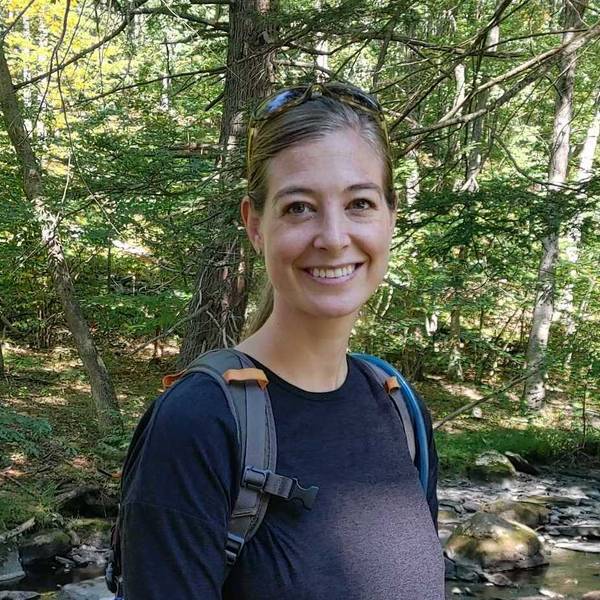 Katherine DeGroff Associate and Online Editor
Katherine DeGroff Associate and Online EditorKatherine is the associate editor of National Parks magazine. Before joining NPCA, Katherine monitored easements at land trusts in Virginia and New Mexico, encouraged bear-aware behavior at Grand Teton National Park, and served as a naturalist for a small environmental education organization in the heart of the Colorado Rockies.
